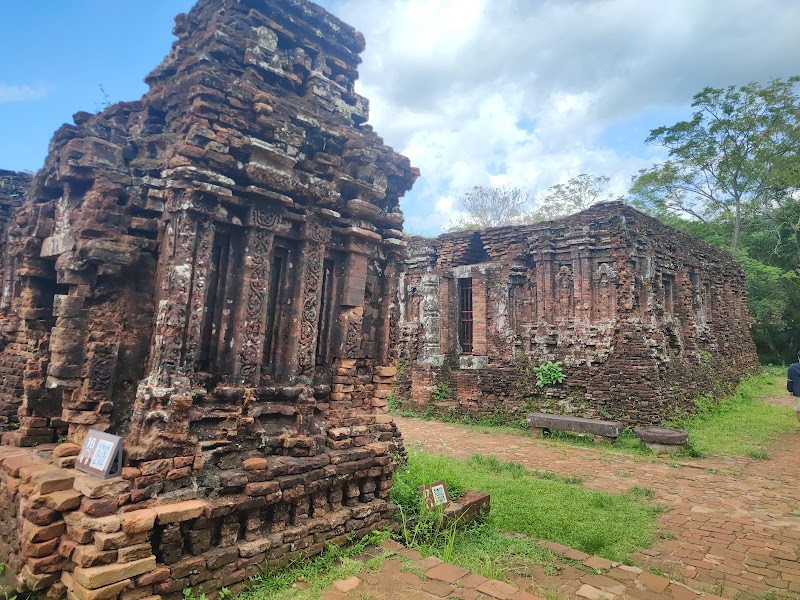
Lunar New Year in Hội An: A Practical Guide to Tet Nguyen Dan Celebrations
Experience Tet Nguyen Dan in Hội An, where the ancient town bursts into festive life with lanterns, traditional markets, and lively dragon dances. This practical guide helps you navigate the vibrant celebrations, offering insider tips to make the most of your visit during Vietnam’s most important holiday.
Book Accommodation Early
Hotels and homestays fill up rapidly during Tet; secure your stay at least two months in advance to avoid last-minute hassles.
Wear Comfortable Shoes
Cobbled streets and crowded market areas require durable, breathable footwear to keep you comfortable during hours of walking.
Stay Hydrated
Humidity spikes during late January and February; carry a water bottle to avoid dehydration amid the festival hustle.
Respect Local Customs
Temples and ancestral altars are active with offerings; maintain a quiet demeanor and follow any posted rules during visits.
Lunar New Year in Hội An: A Practical Guide to Tet Nguyen Dan Celebrations
Every year, Hội An in Quảng Nam transforms as Tet Nguyen Dan—the Vietnamese Lunar New Year—breathes life into the ancient town. Streets light up with vibrant lanterns that sway with each gentle breeze, daring you to explore their glow deep into the night. The pulse of celebration is grounded in deeply rooted traditions, where family gatherings, ancestral offerings, and street markets carve a path through the town’s narrow lanes.
Hội An during Tet is a dance between history and modern-day festivity. The Old Town’s architecture, poised between the river and the market, acts like a steady companion as you move from scene to scene. Expect to witness locals preparing bánh chưng and bánh tét—glutinous rice treats wrapped in banana leaves—that steam gently beside stalls, tempting your senses.
Timing your visit is key. Typically, the holiday spans from late January to mid-February, based on the lunar calendar. The days leading up to Tet offer a crescendo of activity: markets brim with fresh flowers, kumquat trees with dense green leaves and bright fruit dare you to stop and admire, and street performances engage crowds while dragon dances bring a sweep of energy through the air.
For visitors, embrace the rhythm of the town by planning your day early. Morning markets are alive with fresh produce and traditional gifts; afternoons invite quiet strolls along the Thu Bồn River, gently urging you forward past weathered houses and floating boats. Evenings flood the town with color—lanterns strung overhead and the infrequent firework display daring the night sky to keep pace.
Practical details help keep the experience smooth. Accommodation fills quickly during this peak, so booking ahead is essential. Comfortable, breathable footwear will serve well as you wander cobbled streets and uneven shop entrances. Hydrate often; the tropical air is humid, and energy demands climb with the excitement around you. Quieter temples and shrines offer moments to pause and catch your breath, but be ready to navigate crowds respectfully.
Hội An’s Lunar New Year isn’t about conquering an event but engaging with a culture fiercely itself—joyful yet contemplative, bustling yet rooted. This balance keeps each visitor connected to a force greater than the spectacle—the lived experience of a community renewing itself each year.
Nearby Trips
All Adventures
Boat Charters
Water Activities
Adventures near Hội An, Quảng Nam
Discover the unique and memorable adventures that make Hội An, Quảng Nam special.
Frequently Asked Questions
When is the best time to experience Tet celebrations in Hội An?
Tet typically falls between late January and mid-February based on the lunar calendar. The days immediately before and during the New Year's Eve night are the most energetic, while the days after are quieter but still offer festival activities.
Are visitors allowed to participate in Tet rituals or offerings?
While visitors can observe many public traditions, participation in family or religious rituals is usually private. Respect is key—observe quietly and follow local customs without interrupting ceremonies.
What makes Hội An’s Tet celebrations distinct from other Vietnamese cities?
Hội An’s status as a UNESCO Heritage site means traditional lanterns and preserved architecture provide a unique ambiance, blending history with festival energy in a way few other cities replicate.
Is it easy to find food during Tet in Hội An?
Most restaurants and street vendors remain open, but some smaller shops may close for family holidays. The markets offer seasonal specialties, so arriving early ensures you access to fresh offerings.
How crowded does Hội An get during Tet?
Significantly busier than usual. The Old Town fills with locals and tourists alike, especially near the Thu Bồn River and popular temples. Planning visits early in the day or later in the evening helps avoid peak congestion.
Are there any environmental concerns during the festival?
Increased waste and firework pollution are challenges. Visitors can help by using reusable bags, disposing of trash properly, and avoiding sky lanterns that can harm the environment.
Recommended Gear
Comfortable walking shoes
Necessary for navigating cobblestone streets and extensive strolling through busy market areas.
Reusable water bottle
Hydration is crucial in tropical humidity, especially during the festival’s active days.
Lightweight rain jacket
Spring showers are common; a packable jacket helps you stay dry without slowing you down.
Portable phone charger
Keeping devices charged helps with navigation, translation apps, and capturing festival moments.
Local Insights
Hidden Gems
- "Viewpoint near Cẩm Nam Rustic Village for peaceful river scenes away from crowds"
- "Quiet temple shrines like Quang Dong Pagoda for introspective moments"
Wildlife
- "Local bird species along the Thu Bồn River, including kingfishers and herons"
- "Occasional sightings of freshwater crabs in tributaries entering the river"
History
"Hội An has been a major Southeast Asian trading port since the 15th century, and Tet celebrations here maintain strong links to ancestral worship and historical trade guild traditions dating back centuries."